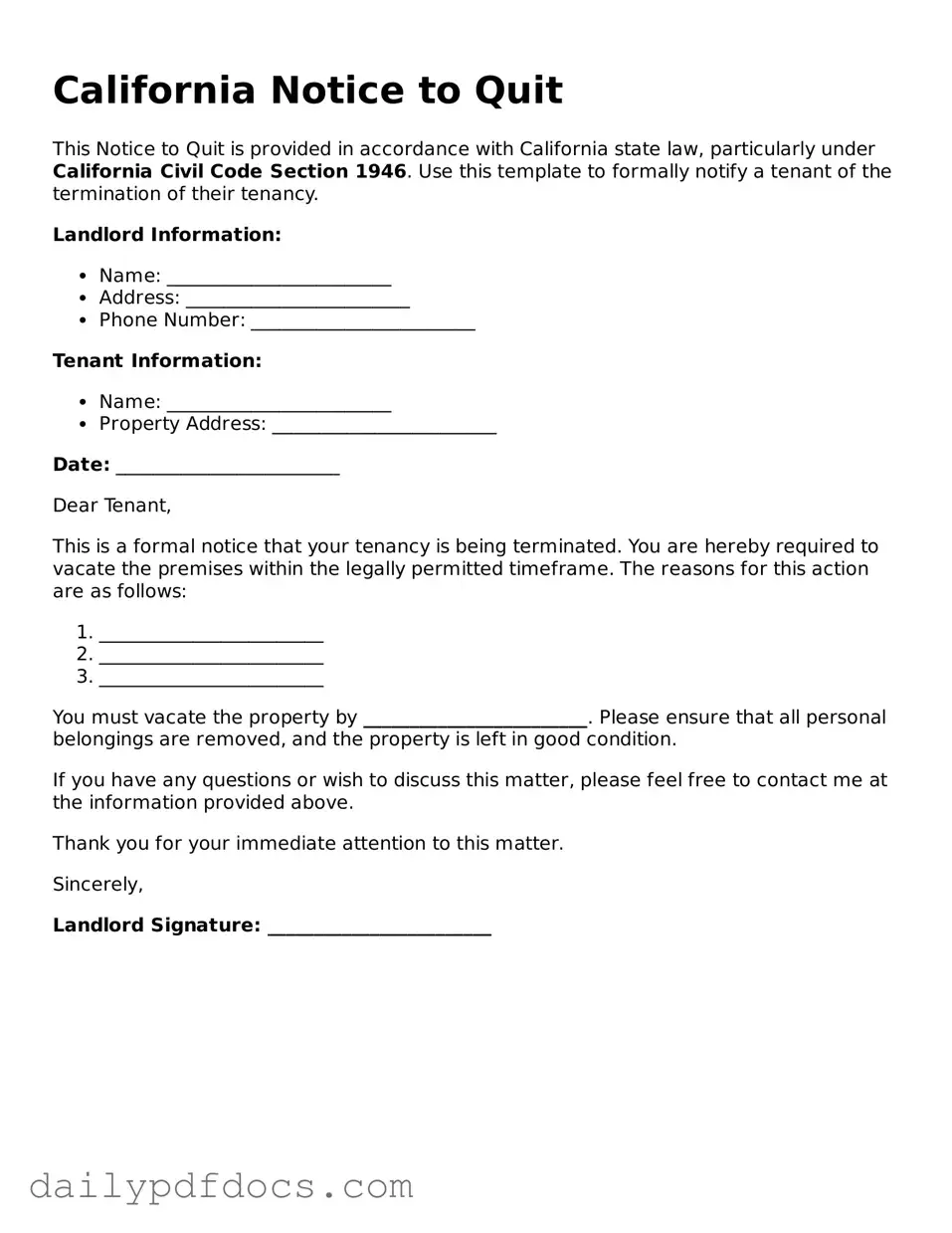What is a California Notice to Quit form?
The California Notice to Quit form is a legal document that a landlord uses to inform a tenant that they must vacate the rental property. This notice is typically used when a tenant has violated the lease agreement or has not paid rent. It serves as a formal way to initiate the eviction process, although it does not guarantee immediate removal from the property.
When should a landlord use a Notice to Quit?
A landlord should use a Notice to Quit when a tenant fails to comply with the terms of the lease, such as not paying rent or engaging in illegal activities. It can also be used when a tenant overstays their lease or does not vacate after the lease has expired. The notice gives the tenant a chance to rectify the situation before further legal action is taken.
How much notice must be given in a Notice to Quit?
The amount of notice required can vary based on the reason for the eviction. For non-payment of rent, a landlord typically must provide a 3-day notice. For lease violations, a 30-day or 60-day notice may be necessary, depending on the duration of the tenancy. It's crucial to follow the specific requirements to ensure the notice is valid.
Can a tenant respond to a Notice to Quit?
Yes, a tenant can respond to a Notice to Quit. If the tenant believes they have rectified the issue, such as paying overdue rent, they should communicate this to the landlord. If they disagree with the notice, they may also choose to contest it in court if the landlord pursues eviction. Open communication can sometimes resolve issues without further legal action.
What happens if the tenant does not leave after receiving a Notice to Quit?
If the tenant does not vacate the property by the deadline specified in the Notice to Quit, the landlord may proceed with filing an unlawful detainer action in court. This legal process seeks to formally evict the tenant. It's essential for landlords to follow legal procedures to avoid complications.
Is a Notice to Quit the same as an eviction notice?
While a Notice to Quit is often a precursor to an eviction notice, they are not the same. The Notice to Quit informs the tenant of the need to vacate, while an eviction notice is a legal document that follows if the tenant does not comply with the Notice to Quit. Essentially, the Notice to Quit is the first step in the eviction process.
Does a Notice to Quit need to be delivered in person?
A Notice to Quit can be delivered in several ways, including in person, by mail, or by posting it on the property. However, it is crucial to ensure that the delivery method complies with California law to ensure the notice is considered valid. Proper delivery helps avoid disputes later on.
Can a landlord change the terms of a Notice to Quit after it has been issued?
Once a Notice to Quit has been issued, the landlord generally cannot change its terms. If the landlord wishes to modify the notice, they would typically need to issue a new Notice to Quit. This ensures clarity and maintains the legal integrity of the eviction process.
What resources are available for tenants who receive a Notice to Quit?
Tenants who receive a Notice to Quit should seek legal advice to understand their rights and options. Local legal aid organizations can provide assistance, as can tenant rights groups. It's important for tenants to know their rights and to respond appropriately to avoid eviction.
